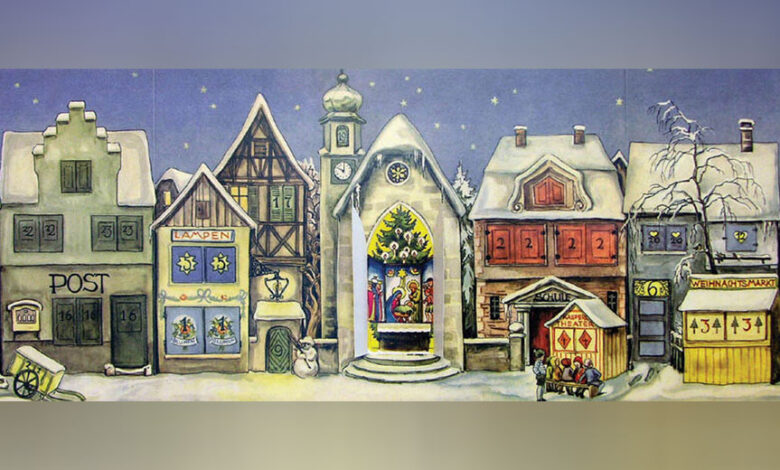
Let’s Celebrate… Advent
Based on the modern advent calendar, most people assume that Advent runs from December 1st – December 24th, but they are wrong! Advent as a religious period actually begins on the fourth Sunday before Christmas, or the Sunday nearest the Feast of St. Andrew on November 30th.
During the Middle Ages, Advent became associated with preparation for the Second Coming. In early days Advent lasted from November 11, the feast of St. Martin, until Christmas Day. Advent was considered a pre-Christmas season of Lent when Christians devoted themselves to prayer and fasting. The Orthodox Eastern Church observes a similar Lenten season, from November 15 until Christmas, rather than Advent.
Advent Wreaths
Advent wreaths have their origins in the folk traditions of northern Europe, where in the deep of winter people lit candles on wheel-shaped bundles of evergreen. Both the evergreen and the circular shape symbolized ongoing life. The candlelight gave comfort at this darkest time of the year, as people looked forward to the longer days of spring.
Later, Eastern European Christians adopted this practice. By the sixteenth century, they were making Advent wreaths much as we know them today. An advent wreath traditionally contains four candles-three purple and one rose. Purple dyes were one so rare and costly that they were associated with royalty. The three purple candles in the Advent wreath symbolize hope, peace, and love. These candles are lit on the first, second, and fourth Sundays of Advent. The rose candle, which symbolizes joy, is usually lit on the third Sunday.
Sometimes a fifth candle is placed inside the Advent wreath. This candle is lit on Christmas Day. It is white, the color associated with angels and the birth of Jesus.
Because Advent wreaths are an informal celebration, not all are the same. Instead of purple candles, some people use blue, which recalls the color of the night sky before daylight returns. Others use all white candles.
Advent Calendars
Advent calendars can be traced back to the 19th century when families would mark every day in December until Christmas Eve with a chalk line.
An advent calendar was typically a card or poster with twenty-four small doors, one to be opened each day from December 1 until Christmas Eve. Each door conceals a picture. This popular tradition arose in Germany in the late 1800s and soon spread throughout Europe and North America. Originally, the images in Advent calendars were derived from the Hebrew Bible.
The first chocolate Advent calendar appeared in 1958, but it was in 1971 that Cadbury joined the race and launched its own version in the UK. Cadbury produced Advent calendars intermittently from 1972 to 1986, but it wasn’t until 1993 that they finally became a mainstay.
Impressively, the Advent calendar company set up by Sellmer still operates today, producing over 140 different varieties of the product. To commemorate an important piece of history, Sellmer’s original Advent calendar design is still available for consumers to buy.








































